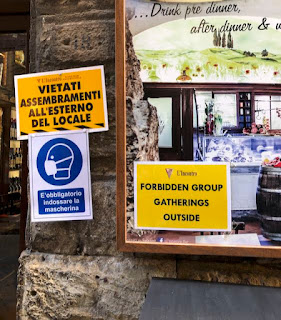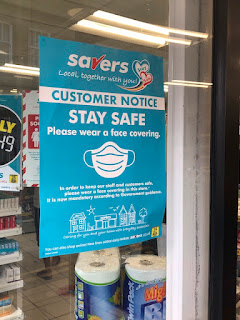The Argos catalogue is no more. If you are the reader of this blog who lives outside the UK, I should explain that this was like a mail order catalogue but no mailing was involved. Argos has stores in every town, where you can/could browse a catalogue and order every kind of stuff, which was stored in a back room, mostly not on display. It inevitably moved online, and after acquisition by Sainsbury's the stores are moving to supermarkets.
Argos does a remarkable job of making a wide range of stuff available in small towns which now longer have specialist shops. At one of our early summer schools the host institution failed to supply a projector... so we popped out to Argos and bought the one we still use.
Some of the vox pop comments in radio interviews struck a chord. Most homes had an Argos catalogue and in the pre-internet days it gave kids access to window-shopping. Families would browse the catalogue together and plan purchases, voice their aspirations and drop birthday present hints.
I'm not sure what the current figures are, but when Argos was a client in the 2000s the figures were astonishing and surprising: for example, they were one of the largest jewellers, furniture retailers and suppliers of electrical goods. Most of the photographers in Milton Keynes where they were based seemed to be sustained by product shots for the catalogue.
The production of the catalogue was a major operation involving five or six printing plants around Europe, and several binderies. They were delivered on pallets near the door of Argos stores for people to take home. When we asked about recycled paper it emerged that there wasn't enough recycled paper in Europe to print the Argos catalogue.
Every now and again they would ask us to review a particular aspect of the catalogue and propose improvements. We treated these projects as exercises in decision support, helping people to choose what features and qualities they needed, and which products had them. We would produce beautifully crafted explanations which were then made rather naffer by in-house designers to fit in with the brash Argos brand.
It was a fascinating encounter with the world of retail. For example, Good Better Best: a typical product range has to have basic products (good), an average products (better) and a top end (best). Some customers will invariably buy from one of these relative price points.
When we worked on the Argos jewellery section, it included a diamond ring priced well over £3,000 although the average jewellery purchase was under £10. No one I spoke to could remember the expensive ring ever being sold but its job was to be Best and lift the image of the Argos jewellery brand. The recipient of a gifted ring could not know for sure that the giver was a cheapskate.








































